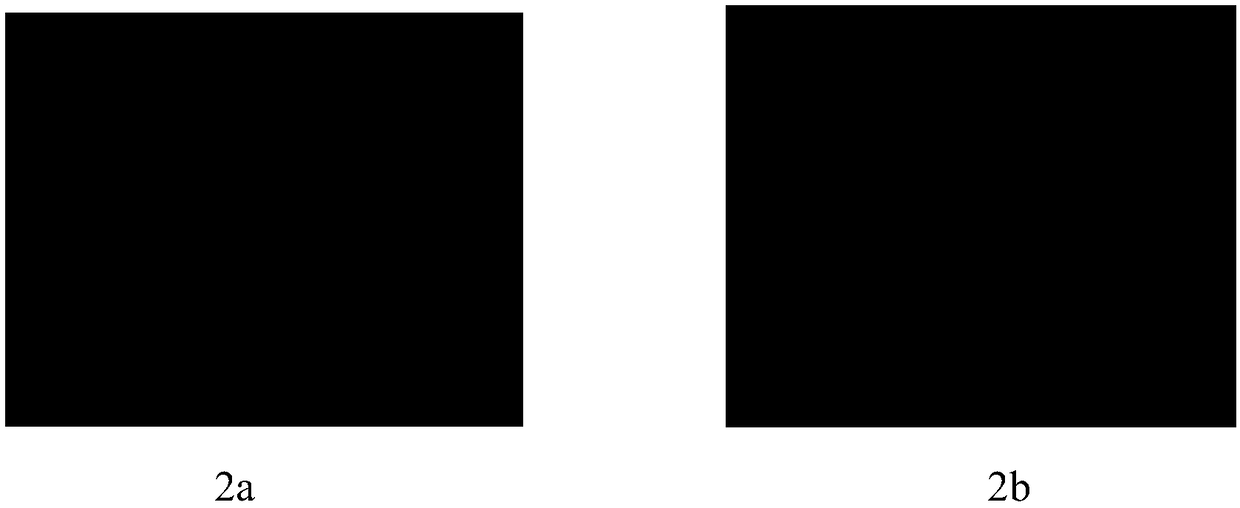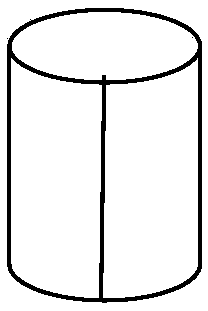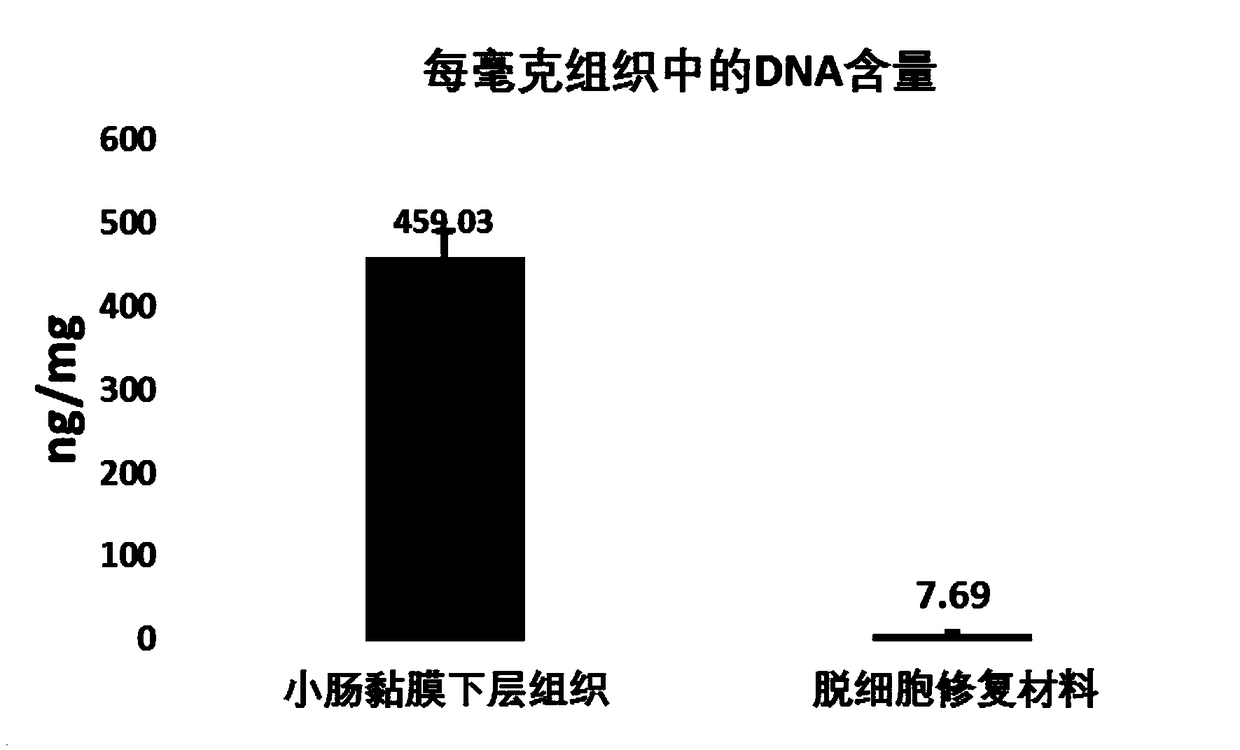Soft tissue repair material and method for preparing same
A technology for repairing materials and soft tissues, applied in biochemical equipment and methods, tissue regeneration, tissue culture and other directions, can solve the problems of reduced biological activity and the risk of in vivo transplantation of biologically active reagents, and achieves simple methods, low prices, and a wide range of materials. Effect
- Summary
- Abstract
- Description
- Claims
- Application Information
AI Technical Summary
Problems solved by technology
Method used
Image
Examples
preparation example Construction
[0028] The invention provides a method for preparing a soft tissue repair material, comprising the following steps:
[0029] 1) removing the small intestinal mucosa, muscular layer and serosa on the small intestinal tissue of mammals to obtain the small intestinal submucosa tissue, and washing with sterile buffer solution containing antibiotics for 3 to 5 times to obtain the washed small intestinal submucosa tissue;
[0030] 2) cutting the washed small intestinal submucosa tissue obtained in step 1) into sections not longer than 5 cm, cutting open along the midline, flattening, soaking in sterile buffer solution, and obtaining the pretreated small intestinal submucosa tissue;
[0031] 3) Place the pre-treated small intestinal submucosa tissue obtained in step 2) in a sterile buffer solution containing 0.2-1% surfactant and 200-600 U / mL nuclease by mass percentage, shake at 37°C for 1- 4h, the decellularized small intestinal submucosa tissue was obtained;
[0032] Described su...
Embodiment 1
[0046] (1) Select the small intestine tissue of healthy pigs, remove the small intestine mucosa, muscular layer and serosa, and repeatedly wash 3 times with a sterile buffer solution containing 100ug / ml penicillin-streptomycin;
[0047] (2) Cut the submucosa tissue of the small intestine into small sections of 5 cm, cut it open from the middle along the midline, and soak it in 250 ml of sterile buffer;
[0048] (3) Place the small intestinal submucosa tissue in a sterile buffer solution containing sodium cocoyl glutamate (1%) and nuclease (200U / ml), and shake it at 37°C for 2 hours;
[0049] (4) Place the small intestinal submucosa tissue in a sterile buffer solution, shake and wash for 10 minutes, and repeat the washing 6 times.
[0050] (5) Exhibit the washed small intestinal submucosa tissue on a sterile stainless steel plate, divide it into small pieces along the natural vein texture, and keep the central matrix membrane part.
[0051] (6) Small intestinal submucosa tissu...
Embodiment 2
[0058] (1) Select 4 healthy male New Zealand white rabbits weighing 3-3.5 kg, and create a 2×2 cm conjunctival defect on the ocular surface of the right eye of each rabbit;
[0059] (2) Rehydrate the soft tissue repair material with normal saline for 1 to 2 minutes;
[0060] (3) Cut it into a patch of the same size as the ocular surface defect under an operating microscope, and suture it at the conjunctival defect.
[0061] (4) Add dexamethasone eye ointment twice a day;
[0062] (5) One week later, the sutures were removed, and the repair of conjunctival defects and the degree of inflammatory response were detected, and sodium fluorescein was added dropwise to detect the epithelial growth.
[0063] result evaluation
[0064] The photos of four New Zealand white rabbits repaired conjunctival defects with soft tissue repair materials for one week are as follows: Figure 5 As shown, among them, Figure 5 a, 5b, 5c, and 5d are parallel comparisons, and are photos of four diff...
PUM
 Login to View More
Login to View More Abstract
Description
Claims
Application Information
 Login to View More
Login to View More - R&D
- Intellectual Property
- Life Sciences
- Materials
- Tech Scout
- Unparalleled Data Quality
- Higher Quality Content
- 60% Fewer Hallucinations
Browse by: Latest US Patents, China's latest patents, Technical Efficacy Thesaurus, Application Domain, Technology Topic, Popular Technical Reports.
© 2025 PatSnap. All rights reserved.Legal|Privacy policy|Modern Slavery Act Transparency Statement|Sitemap|About US| Contact US: help@patsnap.com



